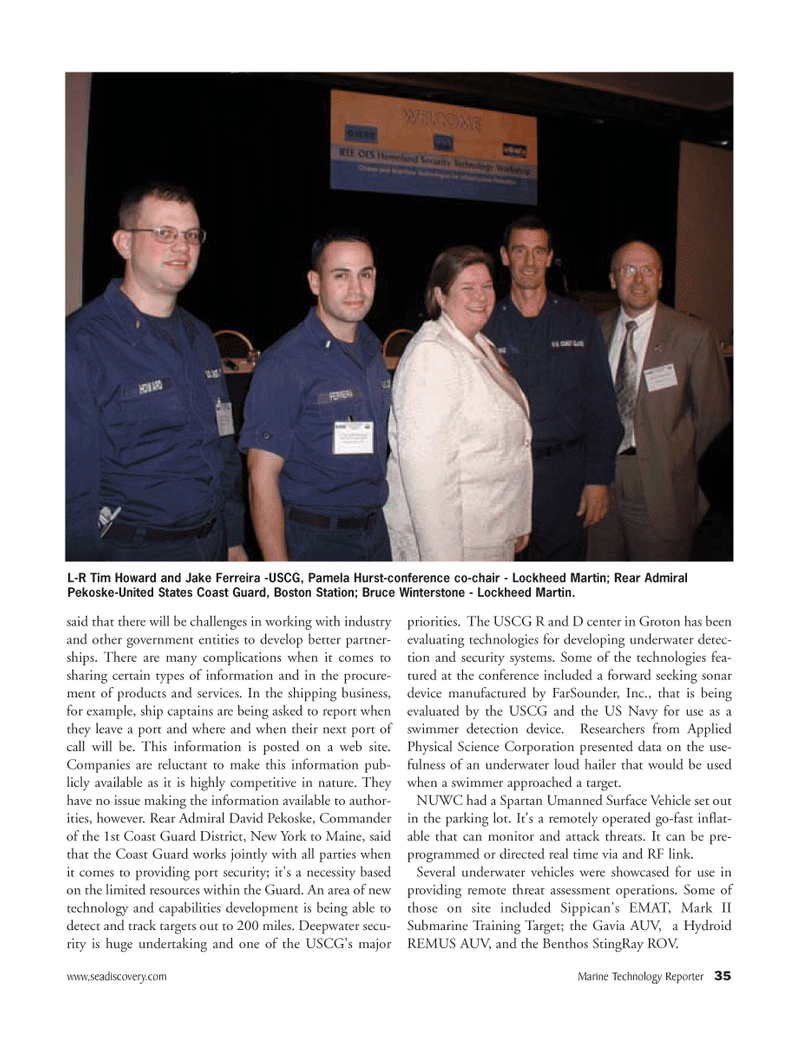
Page 35: of Marine Technology Magazine (January 2006)
Marine Science Institutions
Read this page in Pdf, Flash or Html5 edition of January 2006 Marine Technology Magazine
www,seadiscovery.com Marine Technology Reporter 35 said that there will be challenges in working with industry and other government entities to develop better partner- ships. There are many complications when it comes to sharing certain types of information and in the procure- ment of products and services. In the shipping business, for example, ship captains are being asked to report when they leave a port and where and when their next port of call will be. This information is posted on a web site.
Companies are reluctant to make this information pub- licly available as it is highly competitive in nature. They have no issue making the information available to author- ities, however. Rear Admiral David Pekoske, Commander of the 1st Coast Guard District, New York to Maine, said that the Coast Guard works jointly with all parties when it comes to providing port security; it's a necessity based on the limited resources within the Guard. An area of new technology and capabilities development is being able to detect and track targets out to 200 miles. Deepwater secu- rity is huge undertaking and one of the USCG's major priorities. The USCG R and D center in Groton has been evaluating technologies for developing underwater detec- tion and security systems. Some of the technologies fea- tured at the conference included a forward seeking sonar device manufactured by FarSounder, Inc., that is being evaluated by the USCG and the US Navy for use as a swimmer detection device. Researchers from Applied
Physical Science Corporation presented data on the use- fulness of an underwater loud hailer that would be used when a swimmer approached a target.
NUWC had a Spartan Umanned Surface Vehicle set out in the parking lot. It's a remotely operated go-fast inflat- able that can monitor and attack threats. It can be pre- programmed or directed real time via and RF link.
Several underwater vehicles were showcased for use in providing remote threat assessment operations. Some of those on site included Sippican's EMAT, Mark II
Submarine Training Target; the Gavia AUV, a Hydroid
REMUS AUV, and the Benthos StingRay ROV.
L-R Tim Howard and Jake Ferreira -USCG, Pamela Hurst-conference co-chair - Lockheed Martin; Rear Admiral
Pekoske-United States Coast Guard, Boston Station; Bruce Winterstone - Lockheed Martin.
MTR#1 (33-48).qxd 1/9/2006 3:32 PM Page 35

 34
34

 36
36
